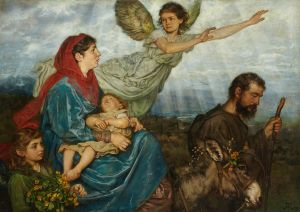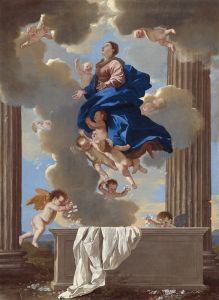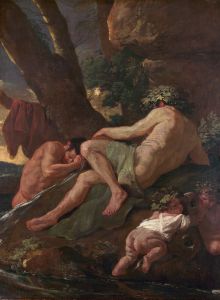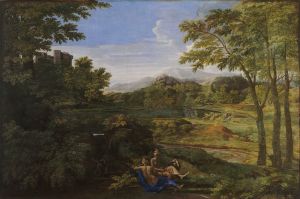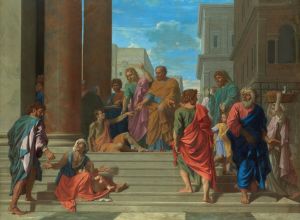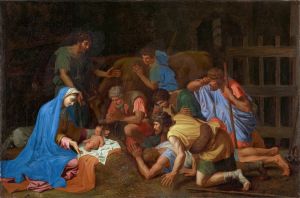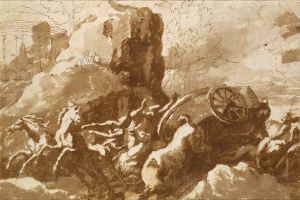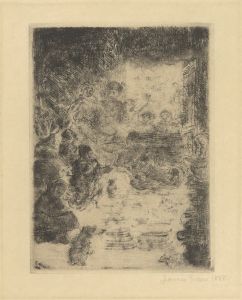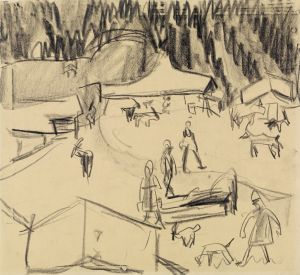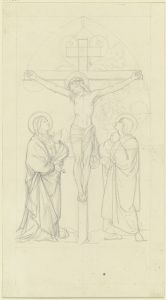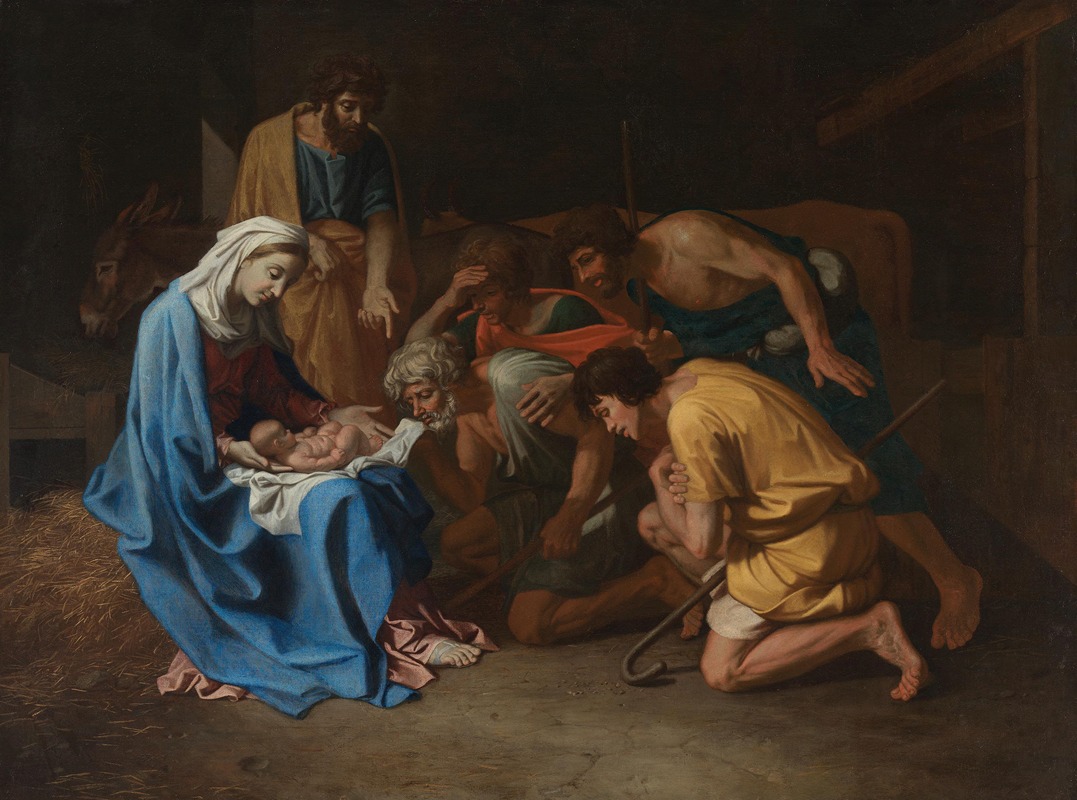
Adoration of the Shepherds
A hand-painted replica of Nicolas Poussin’s masterpiece Adoration of the Shepherds, meticulously crafted by professional artists to capture the true essence of the original. Each piece is created with museum-quality canvas and rare mineral pigments, carefully painted by experienced artists with delicate brushstrokes and rich, layered colors to perfectly recreate the texture of the original artwork. Unlike machine-printed reproductions, this hand-painted version brings the painting to life, infused with the artist’s emotions and skill in every stroke. Whether for personal collection or home decoration, it instantly elevates the artistic atmosphere of any space.
Nicolas Poussin, a prominent French painter of the 17th century, is renowned for his classical approach to painting, which often drew inspiration from ancient history and mythology. One of his notable works is "Adoration of the Shepherds," a painting that exemplifies his mastery in composition, use of color, and ability to convey narrative through art.
"Adoration of the Shepherds" is a depiction of the biblical scene where shepherds visit the newborn Jesus, an event described in the Gospel of Luke. Poussin's interpretation of this scene is marked by his characteristic attention to detail and his ability to infuse the composition with a sense of harmony and balance. The painting is believed to have been completed around 1633-1634, during Poussin's stay in Rome, where he spent most of his career.
In this work, Poussin employs a classical style, characterized by clear lines, structured composition, and a subdued color palette. The figures are arranged in a way that guides the viewer's eye towards the central figure of the infant Jesus, who is depicted lying in a manger. The Virgin Mary and Joseph are positioned nearby, their expressions reflecting a sense of reverence and awe. The shepherds, who have come to pay homage, are depicted with a sense of humility and devotion, their gestures and expressions conveying the significance of the moment.
Poussin's use of light in "Adoration of the Shepherds" is particularly noteworthy. He employs chiaroscuro, a technique that contrasts light and shadow, to create a sense of depth and to highlight the central figures in the scene. The light appears to emanate from the infant Jesus, symbolizing his divine nature and illuminating the faces of those gathered around him. This use of light not only enhances the visual impact of the painting but also reinforces the spiritual message of the scene.
The background of the painting is composed of architectural elements and a landscape that are typical of Poussin's work, reflecting his interest in classical antiquity. These elements serve to frame the central action and provide a sense of timelessness to the scene. Poussin's careful attention to the details of clothing, gestures, and expressions further adds to the realism and emotional depth of the painting.
"Adoration of the Shepherds" is a testament to Poussin's skill as a painter and his ability to convey complex narratives through his art. His work had a significant influence on the development of French classical painting and inspired many artists who followed in his footsteps. Today, Poussin is regarded as one of the great masters of the Baroque period, and his paintings continue to be studied and admired for their technical excellence and profound expression of human emotion.
The painting is housed in the Alte Pinakothek in Munich, Germany, where it remains an important part of the museum's collection. It continues to attract art enthusiasts and scholars who are drawn to Poussin's unique ability to blend classical themes with a deeply personal artistic vision.







